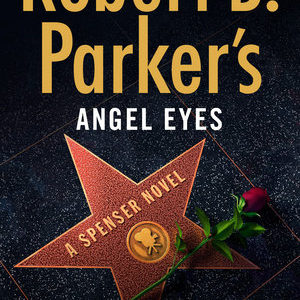Catch up on the series and find new installments daily here.
__________________________________
Rear Window (1954)
__________________________________
TYPE OF FILM: Suspense
STUDIO: Paramount
PRODUCER: Alfred Hitchcock
DIRECTOR: Alfred Hitchcock
SCREENWRITER: John Michael Hayes
SOURCE: “It Had to Be Murder,” short story by William Irish, pseudonym of Cornell Woolrich
RUNNING TIME: 112 minutes
PRINCIPAL PLAYERS:
James Stewart…………………………………………………………….…….L.B. “Jeff” Jeffries
Grace Kelly…………………………………………………………………….Lisa Carol Fremont
Wendell Corey………………………………………………………………..…..Thomas J. Doyle
Thelma Ritter…………………………………………………………………………………Stella
Raymond Burr………………………………………………………………………Lars Thorwald
Judith Evelyn……………………………………………………………………Miss Lonelyhearts
Irene Winston……………………………………………………………………….Mrs. Thorwald
Ross Bagdasarian………………………………………………………………….……..Composer
Georgine Darcy…………………………………………………………………………Miss Torso
Jesslyn Fax…………………………………………………………………………Miss Sculptress
__________________________________
DID YOU KNOW?
__________________________________
Although the set of Rear Window seems so close as to be almost claustrophobic, the one-room set is perhaps the largest ever built on the Paramount lot. The apartment building across the way, into which the wheelchair-bound Jimmy Stewart spies with his binoculars, is a set that required the construction of an apartment building with thirty-one separate apartments, twelve of which were fully furnished. It was Hitchcock’s belief that it would have been impossible to properly light those apartments if they were genuine locations.
__________________________________
THE STORY
__________________________________

Photographer L.B. “Jeff’ Jeffries broke his leg on an assignment and has been confined to his apartment for six weeks, his only amusement being to look into the apartments (and the lives) of the people who live across the courtyard.
While watching Miss Torso, the gorgeous dancer with countless suitors, and Miss Lonelyhearts, a lonely woman who prepares dinner for two but always dines alone, a newlywed couple, a sculptress, and others, he notices the behavior of Lars Thorwald and becomes convinced that he has murdered his nagging wife.
After Jeff sees Thorwald make several trips out of the apartment with a suitcase late on a rainy night, he no longer sees the wife, who previously was always present. Later, he spots Thorwald wrapping a butcher knife and a saw in a newspaper and watches as he ties up a large trunk to be hauled away.
Unable to get out of his wheelchair, Jeff enlists the help of his girlfriend, the beautiful model Lisa Carol Fremont, who wants to marry Jeff. Jeff feels she is too beautiful, too refined—too perfect—for him, and tries to break up with her. She persists and helps him by slipping a note under Thorwald’s door, asking the apparent murderer what he has done with his wife. Jeff follows with a telephone call to lure him out of his apartment, and Lisa climbs the fire-escape ladder and slips into his window, only to have Thorwald return unexpectedly and catch her. Jeff calls the police, but Lisa has found a vital clue—the murdered wife’s wedding ring.
When Thorwald spots her signaling with the ring across the courtyard, he sees Jeff and comes after him, attempting to push him out the window while his neighbors watch. Just as the police arrive, Jeff falls, breaking his other leg, and Thorwald confesses.
***
Rear Window is one of Hitchcock’s greatest successes and may define his work better than any other single film, with the possible exception of North by Northwest. Here is suspense, but also humor (especially in the dialogue of the no-nonsense nurse, Stella). Here, too, is the gorgeous ice-blond heroine, played by the incomparable Grace Kelly. The leading man—laconic and charming, played by James Stewart, a production crew and writer with whom he often worked and felt comfortable, along with a MacGuffin (the dead woman’s wedding ring) all combine to make the quintessential Alfred Hitchcock motion picture.
Cornell Woolrich, who wrote the story on which the film was based, was somewhat bitter about having been paid such a small amount for the story. It was one of eight stories in a collection sold by his Hollywood agent, H.N. Swanson, in the 1940s for $5,000; it was not optioned—meaning more money would be paid if a movie was actually produced—but sold outright, so that the author would never be owed future payments. Woolrich joked (bitterly) that Swanson sold everything for $5,000, hence was known as “Five Grand Swannie.” His fee, therefore, was a little more than $600, but what angered Woolrich even more than the minuscule payment was that Hitchcock did not invite him to the premiere showing of the movie in New York, where Woolrich lived.
Alfred Hitchcock received an Academy Award nomination for Best Director, losing to Elia Kazan for On the Waterfront. John Michael Hayes won an Edgar Allan Poe Award from the Mystery Writer’s of America for his screenplay.
Grace Kelly had just been offered the female lead in On the Waterfront when Hitchcock called to tell her that she was expected for wardrobe fitting. Since she had not seen the script or been offered a contract, she was taken aback, but having enjoyed working with Hitchcock in Dial M for Murder, she agreed to take the part. Eva Marie Saint went on to win an Oscar for Best Supporting Actress, while Kelly won the Best Actress award—not for Rear Window, but for The Country Girl.
Hitchcock Alert: When you see a man winding a clock, that is Hitchcock.
__________________________________
BEST LINE
__________________________________
Stella, Jeff’s nurse, telling him what an idiot he is for not marrying Lisa: “When a man and a woman see each other and like each other, they oughtta come together—wham!—like a coupla taxis on Broadway…not sit around analyzing each other like two specimens in a bottle.”


















